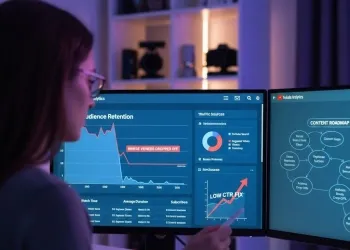Learn about Quantum Finance, QML, Derivative Pricing, and Monte Carlo speedup for risk & portfolio optimization.
The financial world thrives on speed, accuracy, and the ability to model highly complex, uncertain systems. Yet, even with the most powerful classical supercomputers, many problems in modern finance—especially those involving high-dimensional data, non-linear dependencies, and massive search spaces—remain computationally intractable. Enter quantum computing, a revolutionary paradigm that harnesses the principles of quantum mechanics to offer a potential exponential speedup for specific classes of problems.
The emerging field of quantum finance is dedicated to leveraging this technology to solve these currently impossible financial challenges, fundamentally reshaping disciplines like risk modeling, asset management, and pricing. While still in its early "Noisy Intermediate-Scale Quantum" (NISQ) era, the theoretical foundations and early-stage applications are already painting a picture of a radically transformed financial landscape. This comprehensive content explores the profound intersection of quantum mechanics and financial engineering, focusing on the potential to revolutionize how we approach optimization and risk assessment.
The Theoretical Foundation: Why Quantum Beats Classical
Classical computers store information as bits, which are either a 0 or a 1. Quantum computers use qubits, which, due to the phenomenon of superposition, can exist as a combination of 0 and 1 simultaneously. Furthermore, entanglement allows qubits to be correlated in a way that exponentially increases the computational space.
For a classical computer, simulating a financial market with $N$ possible states requires calculating each state sequentially. For a quantum computer with $n$ qubits, the system can be in $2^n$ states at once, allowing it to explore the entire possibility landscape simultaneously. This massive parallelism is the source of the promised "quantum advantage" and the reason why financial models that currently take days or weeks could, in the future, be solved in minutes or seconds.
Quantum Algorithms for Intractable Problems in Finance
The most significant immediate applications in quantum finance fall into three main algorithmic categories: Optimization, Machine Learning, and Simulation.
Risk and Portfolio Optimization
The most famous problem in modern portfolio theory is finding the optimal portfolio allocation—the set of assets that maximizes expected return for a given level of risk (or minimizes risk for a target return). This involves solving a complex, high-dimensional problem that scales poorly with the number of assets. For hundreds or thousands of assets, classical algorithms can only find good, but not necessarily optimal, solutions within a reasonable time.
The Intractability:
Portfolio optimization is often formulated as a Quadratic Unconstrained Binary Optimization (QUBO) problem. The sheer number of potential asset combinations makes an exhaustive search computationally infeasible. For example, a portfolio with 100 assets has $2^{100}$ possible combinations, a number larger than the atoms in the universe.
Quantum Solution (QAOA/VQE):
The Quantum Approximate Optimization Algorithm (QAOA) and the Variational Quantum Eigensolver (VQE) are promising NISQ-era algorithms. They are designed to find the approximate ground state of a Hamiltonian, which, when the optimization problem is mapped onto it, corresponds to the optimal solution. These algorithms iteratively use both quantum and classical processors in a hybrid approach, potentially offering a path to an early quantum advantage for practical, real-world portfolio sizes. This is a direct application for sophisticated risk modeling.
Quantum Machine Learning (QML)
The rise of machine learning in finance has transformed everything from fraud detection to algorithmic trading. Quantum machine learning (QML) integrates quantum computing into machine learning pipelines, seeking to accelerate the training of models and uncover patterns in high-dimensional financial data that are invisible to classical techniques.
Financial Applications of QML:
QML algorithms are being explored for tasks such as:
- Credit Scoring and Default Prediction: Training more accurate classifiers (like Quantum Support Vector Machines or Quantum Neural Networks) by encoding complex relationships between a vast number of borrower features.
- Algorithmic Trading: Developing advanced quantum-enhanced reinforcement learning models that can rapidly process market data and adapt trading strategies in real-time.
- Risk Modeling: Enhancing models for systemic risk prediction by capturing intricate, non-linear correlations between market components more effectively than classical methods.
The theoretical advantage of QML comes from the potential to perform matrix algebra and search operations exponentially faster (e.g., Quantum Principal Component Analysis) and from the ability to prepare and process quantum states that naturally represent high-dimensional classical data.
Stochastic Modeling and Derivative Pricing
Stochastic modeling is the bedrock of quantitative finance, used extensively in derivative pricing and risk modeling. The gold standard for these calculations is often the Monte Carlo simulation.
The Quantum Speedup for Monte Carlo Simulation
Monte Carlo simulation estimates the value of an unknown parameter (like a derivative price or a risk measure) by averaging the outcomes of numerous random scenarios. The precision of the estimate increases only as the square root of the number of samples, $O(1/\sqrt{M})$, where $M$ is the number of samples. To double the precision, you need four times the computational cost. This slow convergence is a major bottleneck for pricing complex, path-dependent derivatives or calculating accurate risk metrics like Value-at-Risk (VaR) and Conditional Value-at-Risk (CVaR).
Quantum Solution (QAE):
The Quantum Amplitude Estimation (QAE) algorithm offers a quadratic speedup over classical Monte Carlo methods. Instead of $M$ samples for a desired precision $\epsilon$, QAE requires only $O(1/\epsilon)$ operations compared to the classical $O(1/\epsilon^2)$. This means that for the same accuracy, the computational time is significantly reduced. This quantum enhancement is one of the most promising near-term applications of quantum computing in finance, directly impacting the speed and accuracy of derivative pricing.
Modeling Complex Probability Distributions
The need for a quantum speedup is particularly acute when dealing with complex probability distributions, such as those that underpin multi-asset options, American options, or credit default swap (CDS) portfolio pricing. These instruments require simulating a vast number of correlated random variables, a task that quickly overwhelms classical computing resources.
Quantum computing enables the encoding of these complex, high-dimensional probability distributions into a quantum state. The ability of QAE to efficiently extract information (like the expected value) from this quantum state allows for the efficient and high-fidelity pricing of exotic financial derivatives, a capability that currently represents one of the most challenging computational problems in finance.
The Theoretical and Early-Stage Applications
The promise of quantum finance is to solve currently intractable problems in risk and portfolio optimization—the class of problems where the computational resources required grow exponentially with the problem size.
Risk Modeling Beyond the Limits
Classical risk modeling often relies on simplifying assumptions (e.g., normally distributed returns, linear correlations) to keep the models computationally tractable. These simplifications, however, can fail dramatically during periods of market stress, leading to massive losses (e.g., the 2008 financial crisis).
Quantum computing offers the tools to model financial reality with greater fidelity:
- Tail Risk Analysis: Analyzing extreme, low-probability events (tail risk) is computationally expensive because it requires simulating billions of scenarios. QAE's speedup can make high-fidelity tail risk modeling feasible in real-time.
- Systemic Risk: Modeling the cascading effects of a single failure across an interconnected financial system is an exponentially complex problem. Quantum optimization and QML can be used to model the network of dependencies and find hidden systemic vulnerabilities that current models overlook.
- Credit Risk and CVA/DVA: Calculating complex credit risk measures, such as Credit Value Adjustment (CVA) and Debt Value Adjustment (DVA), involves nested Monte Carlo simulation—a calculation that is currently so expensive that many institutions only perform it monthly or quarterly. Quantum speedup could allow for daily or even real-time CVA/DVA calculations, significantly improving trading and collateral management.
Portfolio Optimization: True Global Minima
In portfolio optimization, the goal is to find the true global minimum risk portfolio on the efficient frontier. Classical solvers often get stuck in local minima, leading to sub-optimal investment choices.
The Intractability:
For complex portfolios with multiple constraints (liquidity, transaction costs, ethical screens, etc.), the search landscape becomes non-convex and highly rugged, making it nearly impossible for classical computers to guarantee a globally optimal solution.
Quantum Opportunity:
Algorithms like QAOA are specifically designed for this type of combinatorial optimization problem. In the fault-tolerant quantum era, they are expected to find the *true* globally optimal portfolio allocation faster and more reliably than any known classical method, translating directly into enhanced alpha and reduced risk-adjusted losses.
Roadmap and Challenges for Practical Quantum Advantage
While the theoretical outlook is strong, the path to commercial quantum advantage in financial modeling faces significant challenges:
- Hardware Limitations (NISQ Era): Current quantum computers are Noisy Intermediate-Scale Quantum (NISQ) devices. They have a limited number of qubits, high error rates, and short coherence times. This prevents running the massive, complex circuits required for full-scale financial algorithms. The current focus is on hybrid quantum-classical algorithms which offload the most demanding parts of the calculation to the quantum processor while relying on a classical computer for optimization, mitigating some noise issues.
- Data Encoding (Quantum RAM): Financial algorithms require loading vast amounts of classical data (historical prices, correlation matrices) into a quantum state. A practical, high-capacity, high-speed Quantum Random Access Memory (QRAM), which is essential for realizing exponential speedups, has not yet been reliably engineered.
- Algorithm Development: Mapping complex financial problems (like non-linear stochastic processes) onto the limited connectivity and gate operations of current quantum hardware requires specialized and innovative algorithm development.
Despite these hurdles, major financial institutions like Goldman Sachs, JPMorgan Chase, and Fidelity are already actively collaborating with quantum hardware and software firms, developing proof-of-concept models for derivative pricing, arbitrage detection, and credit risk modeling. These early-stage applications are essential for building the required expertise and intellectual property, ensuring that the financial industry is ready to exploit the technology the moment fault-tolerant quantum computers become available.
Conclusion: The Future of Computational Finance
Quantum computing is not merely an incremental improvement over classical processing; it represents a fundamental paradigm shift with the potential to solve the most difficult and computationally expensive problems in finance. The integration of quantum finance principles, powered by quantum machine learning (QML) and algorithms that dramatically accelerate Monte Carlo simulation and optimization, promises a new era of ultra-accurate risk modeling and superior portfolio management. From calculating the fair value of complex options using complex probability to finding the truly optimal asset allocation, the quantum future of financial modeling is one of unprecedented speed, fidelity, and efficiency.




































